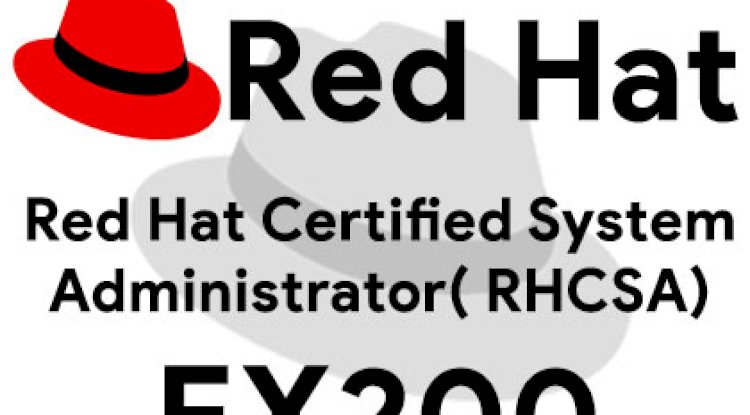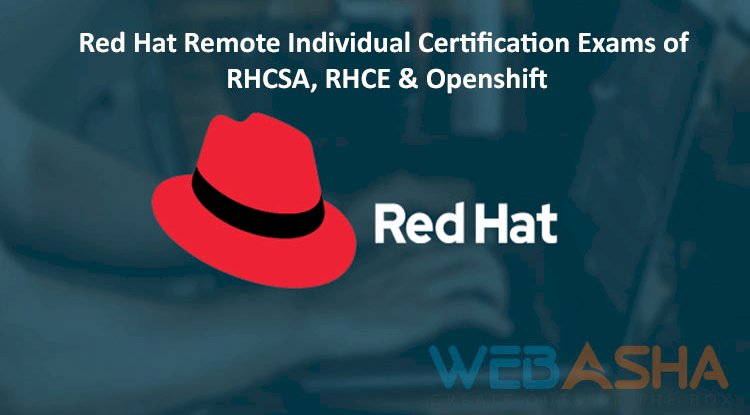New Security Flaws in VMware Tools and CrushFTP: High-Risk Vulnerabilities with No Workaround | How to Protect Your Systems ?
Recent cybersecurity threats have emerged with the discovery of high-risk vulnerabilities in VMware Tools and CrushFTP. The VMware Tools authentication bypass vulnerability (CVE-2025-22230) allows non-administrative users to gain privileged access to virtual machines. Meanwhile, CrushFTP suffers from an unauthenticated HTTP(S) port access flaw, potentially exposing servers to unauthorized access. Both vulnerabilities require immediate security updates, as there are no workarounds to mitigate them. Organizations using VMware Tools for Windows (versions 11.x.x and 12.x.x) and CrushFTP (versions 10 and 11) must update to VMware Tools 12.5.1 and enable the CrushFTP DMZ function to protect their systems. This blog explores the risks, affected versions, security patches, and best practices to safeguard against these vulnerabilities.
Table of Contents
- Introduction
- VMware Tools Security Flaw (CVE-2025-22230)
- CrushFTP Vulnerability: Unauthenticated HTTP(S) Port Access
- Why These Vulnerabilities Matter
- How to Secure Your Systems
- Conclusion
- Frequently Asked Questions (FAQs)
Introduction
Recent security vulnerabilities in VMware Tools for Windows and CrushFTP have raised significant cybersecurity concerns. These flaws could allow authentication bypass and unauthorized access, putting sensitive systems at risk. Broadcom has released security patches for VMware Tools, but there are no workarounds for these issues. CrushFTP has also disclosed an unauthenticated HTTP(S) port access vulnerability.
This blog explores the details of these security flaws, their risks, affected versions, and necessary security measures. Organizations must take immediate action to secure their systems against these high-risk vulnerabilities.
VMware Tools Security Flaw (CVE-2025-22230)
What is the VMware Tools Vulnerability?
A critical authentication bypass vulnerability has been identified in VMware Tools for Windows, tracked as CVE-2025-22230. It allows a non-administrative user on a Windows guest VM to perform high-privilege operations due to improper access control.
Severity and Impact
-
CVE-2025-22230 is rated 7.8 on the CVSS scale, making it a high-severity vulnerability.
-
If exploited, a malicious user could bypass authentication and perform privileged actions within a virtual machine (VM).
-
The flaw affects VMware Tools versions 11.x.x and 12.x.x.
Who Discovered the Flaw?
-
The vulnerability was discovered and reported by Sergey Bliznyuk from Positive Technologies, a cybersecurity firm based in Russia.
Is There a Fix?
-
Broadcom has released VMware Tools version 12.5.1, which addresses this vulnerability.
-
There are no workarounds for this issue, making it crucial for users to update their systems immediately.
CrushFTP Vulnerability: Unauthenticated HTTP(S) Port Access
What is the CrushFTP Security Flaw?
A newly discovered vulnerability in CrushFTP versions 10 and 11 allows unauthenticated users to access HTTP(S) ports. This could lead to data breaches, unauthorized system access, and potential exploitation by hackers.
Severity and Risk
-
The vulnerability has not been assigned a CVE yet, but it poses a serious security risk.
-
Attackers can exploit the flaw to gain unauthorized access to CrushFTP servers via exposed HTTP(S) ports.
-
Although not actively exploited in the wild, it remains a significant threat.
Mitigation and Fixes
-
CrushFTP has confirmed that if the DMZ function is enabled, the vulnerability is not exploitable.
-
Users should immediately update to the latest version of CrushFTP and enable security configurations to mitigate risk.
Why These Vulnerabilities Matter
Potential Threats
Both vulnerabilities pose serious security risks, including:
-
Unauthorized access to virtual machines and sensitive data.
-
Privilege escalation, where attackers gain higher-level access to systems.
-
Remote exploitation, allowing attackers to compromise servers and spread malware.
Previous Exploits of VMware and CrushFTP
-
VMware security flaws have previously been exploited in cyberattacks, leading to data breaches and ransomware infections.
-
CrushFTP vulnerabilities have also been targeted by hackers looking to exploit weak configurations.
How to Secure Your Systems
| Security Measure | Description |
|---|---|
| Update Software | Upgrade VMware Tools to version 12.5.1 and update CrushFTP to the latest version. |
| Enable DMZ Function (CrushFTP) | If using CrushFTP, enable the DMZ function to prevent unauthorized access. |
| Monitor Network Traffic | Use Intrusion Detection Systems (IDS) to detect abnormal behavior. |
| Restrict Access | Limit access to VMware virtual machines and CrushFTP servers to trusted users only. |
| Implement Strong Authentication | Use Multi-Factor Authentication (MFA) to prevent unauthorized logins. |
| Regular Security Audits | Conduct frequent security assessments to identify vulnerabilities. |
Conclusion
The VMware Tools and CrushFTP vulnerabilities are high-risk security flaws that require immediate action. Organizations using VMware virtual machines and CrushFTP servers should apply the necessary patches to prevent potential cyberattacks. Since there are no workarounds, updating to the latest versions is the only way to mitigate these threats.
Cybersecurity teams should stay informed, follow best practices, and ensure continuous monitoring to protect against these and future vulnerabilities.
Frequently Asked Questions (FAQs)
What is the latest security flaw in VMware Tools?
The latest security flaw in VMware Tools is CVE-2025-22230, an authentication bypass vulnerability that allows non-admin users on a Windows guest VM to perform high-privilege operations.
How severe is CVE-2025-22230?
CVE-2025-22230 has a CVSS severity score of 7.8, making it a high-risk vulnerability that requires immediate patching.
Which VMware Tools versions are affected?
VMware Tools versions 11.x.x and 12.x.x for Windows are affected by this vulnerability.
Has VMware released a fix for CVE-2025-22230?
Yes, VMware has patched this issue in VMware Tools version 12.5.1. Users must update immediately.
Are there any workarounds for this VMware vulnerability?
No, there are no workarounds for CVE-2025-22230. Applying the update is the only solution.
Who discovered the VMware Tools vulnerability?
The flaw was discovered and reported by Sergey Bliznyuk from Positive Technologies.
What is the CrushFTP security flaw?
CrushFTP has a vulnerability in HTTP(S) port access, allowing unauthenticated users to access exposed ports, posing a significant security risk.
Which CrushFTP versions are affected?
CrushFTP versions 10 and 11 are affected by this security flaw.
Has CrushFTP assigned a CVE to this vulnerability?
No, a CVE identifier has not yet been assigned to this vulnerability.
How can attackers exploit the CrushFTP vulnerability?
Attackers can gain unauthorized access to CrushFTP servers if HTTP(S) ports are exposed without proper security measures.
Is the CrushFTP vulnerability currently being exploited?
As of now, there is no evidence that the vulnerability is being actively exploited in the wild.
How can users protect their CrushFTP servers?
Users should enable the DMZ function in CrushFTP and update to the latest version to secure their systems.
Why are these vulnerabilities dangerous?
Both vulnerabilities could allow unauthorized access, privilege escalation, and system compromise, putting sensitive data and infrastructure at risk.
What actions should organizations take immediately?
Organizations should update VMware Tools to version 12.5.1, enable the CrushFTP DMZ function, and apply network security measures to prevent exploitation.
Can a firewall prevent the CrushFTP vulnerability?
A firewall may help reduce exposure, but updating and enabling security features like DMZ mode is necessary for complete protection.
Are virtual machines at risk due to CVE-2025-22230?
Yes, virtual machines running Windows guest OS with affected VMware Tools versions are vulnerable to this attack.
What is privilege escalation in VMware Tools?
Privilege escalation occurs when a low-privilege user gains high-level access within a virtual machine due to a vulnerability like CVE-2025-22230.
Why is VMware Tools commonly targeted by hackers?
VMware Tools is widely used in enterprise virtualized environments, making it an attractive target for cybercriminals looking for privilege escalation and unauthorized access.
Is CrushFTP used for secure file transfers?
Yes, CrushFTP is a secure file transfer and server management tool, but vulnerabilities like this one pose risks if security settings are not properly configured.
Can disabling HTTP(S) access in CrushFTP fix the vulnerability?
Disabling unnecessary HTTP(S) access can reduce exposure, but updating CrushFTP and enabling DMZ mode is the best defense.
What industries are most affected by these vulnerabilities?
Industries using virtual machines (cloud providers, IT firms, financial institutions) and secure file transfer services are at the highest risk.
Can these vulnerabilities lead to ransomware attacks?
Yes, attackers could exploit these vulnerabilities to gain access to systems, deploy ransomware, or steal sensitive data.
How often should organizations check for security updates?
Organizations should regularly check for security patches, monitor cybersecurity advisories, and apply updates as soon as they are available.
What role does network monitoring play in mitigating these threats?
Network monitoring tools can detect abnormal traffic patterns, unauthorized access attempts, and potential exploitation of vulnerabilities.
Should users consider alternative file transfer solutions instead of CrushFTP?
If users cannot secure their CrushFTP servers properly, they may consider alternative secure file transfer solutions with better security controls.
What happens if organizations do not patch these vulnerabilities?
Failing to patch these vulnerabilities exposes systems to cyberattacks, data breaches, and potential financial losses.
How can businesses ensure ongoing security against such threats?
Businesses should implement a cybersecurity strategy, including regular updates, vulnerability scanning, network monitoring, and user access control.
What are the long-term implications of these vulnerabilities?
Long-term implications include increased cybersecurity threats, data breaches, compliance violations, and potential damage to organizational reputation.
Can AI-based security tools help detect these vulnerabilities?
Yes, AI-driven security tools can help identify, analyze, and respond to security threats faster than traditional monitoring systems.
Where can users find official security patches for these vulnerabilities?
Users can find security patches on VMware’s official website for VMware Tools and on CrushFTP’s official site for their latest security updates.
What are the best practices for securing enterprise virtual machines and file transfer systems?
Best practices include regular patching, enabling MFA, restricting access, monitoring network traffic, and following security advisories from trusted sources.













![Top 10 Ethical Hackers in the World [2025]](https://www.webasha.com/blog/uploads/images/202408/image_100x75_66c2f983c207b.webp)

![[2025] Top 100+ VAPT Interview Questions and Answers](https://www.webasha.com/blog/uploads/images/image_100x75_6512b1e4b64f7.jpg)








